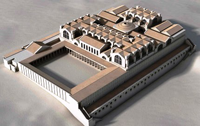EPHESUS TOURS BEST
'' FULLY INSURED GUIDED EPHESUS TOURS,EXCURSIONS ! ''
Powered by Darius Travel
since 1994
since 1994
'' FULLY INSURED GUIDED EPHESUS TOURS,EXCURSIONS ! ''
 citizen, who is sometimes called the second founder of the Ephesus.
citizen, who is sometimes called the second founder of the Ephesus.